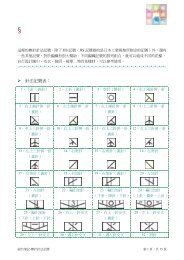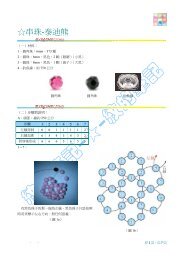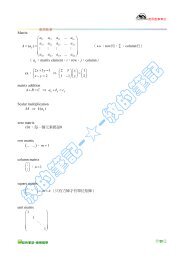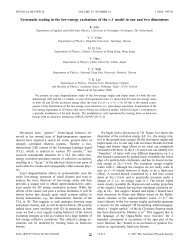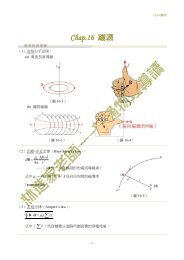Chapter 22 Materials Selection and Design Considerations
Chapter 22 Materials Selection and Design Considerations
Chapter 22 Materials Selection and Design Considerations
You also want an ePaper? Increase the reach of your titles
YUMPU automatically turns print PDFs into web optimized ePapers that Google loves.
<strong>22</strong>.10 Anatomy of the Hip Joint • W109<br />
Table <strong>22</strong>.3 Mechanical Characteristics of Human Long Bone Both<br />
Parallel <strong>and</strong> Perpendicular to the Bone Axis<br />
Parallel to Perpendicular to<br />
Property Bone Axis Bone Axis<br />
Elastic modulus, GPa (psi) 17.4 11.7<br />
(2.48 � 10 6 ) (1.67 � 10 6 )<br />
Ultimate strength, tension, MPa 135 61.8<br />
(ksi) (19.3) (8.96)<br />
Ultimate strength, compression, 196 135<br />
MPa (ksi) (28.0) (19.3)<br />
Elongation at fracture 3–4% —<br />
Source: From D. F. Gibbons, “Biomedical <strong>Materials</strong>,” pp. 253–254, in H<strong>and</strong>book<br />
of Engineering in Medicine <strong>and</strong> Biology, D. G. Fleming <strong>and</strong> B. N. Feinberg,<br />
CRC Press, Boca Raton, FL, 1976. With permission.<br />
material with mechanical properties that differ in the longitudinal (axial) <strong>and</strong> transverse<br />
(radial) directions (Table <strong>22</strong>.3). The articulating (or connecting) surface of<br />
each joint is coated with cartilage, which consists of body fluids that lubricate <strong>and</strong><br />
provide an interface with a very low coefficient of friction that facilitates the bonesliding<br />
movement.<br />
The human hip joint (Figure <strong>22</strong>.24) occurs at the junction between the pelvis<br />
<strong>and</strong> the upper leg (thigh) bone, or femur. A relatively large range of rotary motion<br />
is permitted at the hip by a ball-<strong>and</strong>-socket type of joint; the top of the femur terminates<br />
in a ball-shaped head that fits into a cup-like cavity (the acetabulum) within<br />
the pelvis. An X-ray of a normal hip joint is shown in Figure <strong>22</strong>.25a.<br />
This joint is susceptible to fracture, which normally occurs at the narrow region<br />
just below the head. An X-ray of a fractured hip is shown in Figure <strong>22</strong>.25b; the arrows<br />
show the two ends of the fracture line through the femoral neck. Furthermore,<br />
the hip may become diseased (osteoarthritis); in such a case small lumps of bone<br />
form on the rubbing surfaces of the joint, which causes pain as the head rotates in<br />
the acetabulum. Damaged <strong>and</strong> diseased hip joints have been replaced with artificial<br />
or prosthetic ones, with moderate success, beginning in the late 1950s. Total hip<br />
Pelvis<br />
Head<br />
Acetabulum<br />
Femur<br />
Pelvis<br />
Spine<br />
Figure <strong>22</strong>.24 Schematic diagram of human hip<br />
joints <strong>and</strong> adjacent skeletal components.





